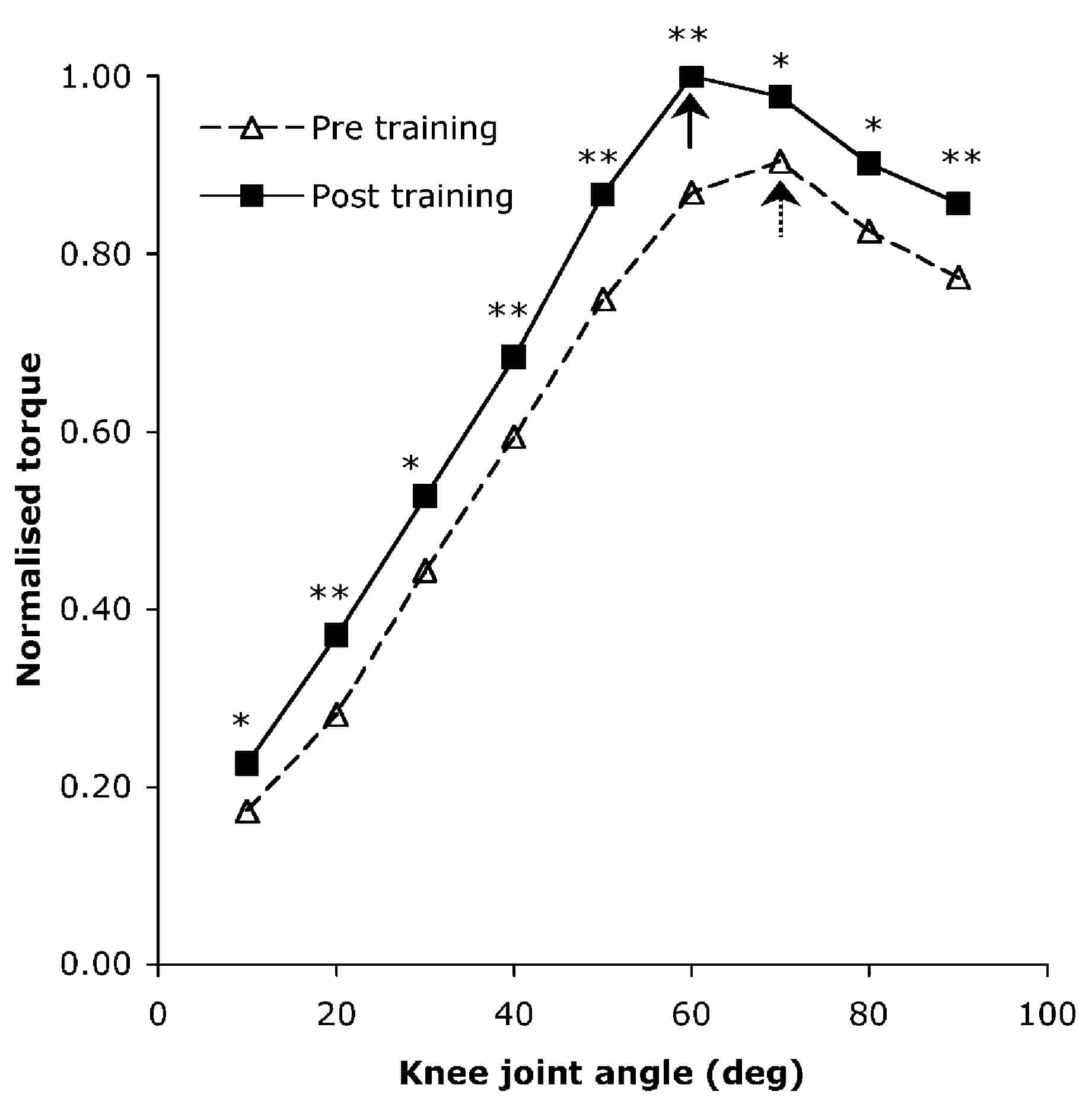Ageing-induced reductions in maximal muscle strength diminish the reserve capacity available to perform tasks of daily living. Strength training in old age is an effective method for increasing maximal strength (Frontera, et al. 1988, Harridge, et al. 1999), however, little is known regarding adaptations in the torque-angle relation and its determinants. Therefore, the present in vivo experiments aimed to investigate training-induced changes in the torque-angle relation and study the determinants of any alteration.
After receiving ethics committee approval, nine older adults were randomly assigned to a training group (age 74.3 ± 3.5 years; mean ± S.D.) and nine to a non-training control group (age 67.1 ± 2 years). Strength training consisted of 2 series of 10 repetitions at 80 % of the 5-repetition maximum for leg-extension and leg-press exercises, performed 3 times per week for 14 consecutive weeks. Maximal isometric knee extension torque was assessed across the knee joint angle range from 90 to 0 deg (0 deg = full extension). The architecture of the vastus lateralis (VL) muscle (fascicle length and pennation angle) was assessed in vivo using ultrasonography. The VL muscle fascicle force was estimated by using a geometrical muscle model and taking into account measurements of torque, agonist-antagonist muscle activation, the tendon moment arm length and muscle architecture. Data were analysed using factorial analysis of variance. Values presented are means ± S.D.
Training altered the torque-angle relation (1) displacing it by 9-31 % towards higher torque values and (2) shifting the optimal angle by 10 deg in the direction of full knee extension from 70 deg (121.4 ± 61 Nm) before training, to 60 deg (134.2 ± 57.2 Nm; P < 0.05) after training (Fig. 1). Training altered the fascicle force-length relation (1) displacing it by 11-35 % towards higher force values and (2) shifting the optimal fascicle length by 9.5 mm towards longer fascicle lengths from 83.7 ± 8 mm (847.9 ± 365.3 N) before training, to 93.2 ± 12.5 mm (939.3 ± 347.8 N; P < 0.01) after training. Despite the change in the fascicle force-length relation, the estimated sarcomere length range in the VL muscle remained the same before and after training, indicating training-induced increases in tendon stiffness (Reeves, et al. 2003). The upward displacement of the torque-angle relation was explained mainly by increased activation capacity of agonist muscles, whilst the shift in the optimal angle was due to the increased length of fascicles and increased tendon stiffness. The present findings have implications for muscle function and the assessment of training-induced adaptations in elderly humans.
Many thanks to Technogym for providing the resistance machines used in this study. This work was partly supported by Italian Space Agency funds. The authors are grateful to the participants for their excellent motivation and adherence to the study.

